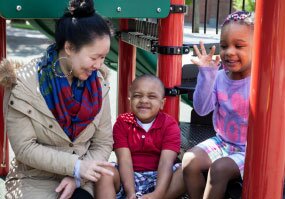Improving the eleven indicators in this report requires changing our approach. The status quo is not acceptable if we want to achieve the goals that all kids need to thrive: a healthy start in life, basic needs met, and the educational opportunities they need to reach their full potential. Two broad strategies will help improve conditions for Washington state’s kids: (1) undo structural racism, and (2) invest in policies that improve conditions for children, as well as their parents.
Undoing structural racism
Racism, in the form of exclusion and discriminatory practices in housing, finance, education, and criminal justice, created the disparities shown by this data. Having been sustained over many years, these exclusionary practices will only be undone by inclusive practices. Here are five simple things all of us can do to bring about the inclusive conditions necessary to build a solid future for kids:
- Read the and reports from the Annie E. Casey Foundation. Resources for talking about the role of race in structuring the lives of kids and families are available there.
- Consult with leaders in communities of color to learn about the strategies that redress inequities. Talk to the people represented in the data to deepen your understanding of their experience, and learn community-driven strategies to reduce inequality and advance racial justice.
- Use the KIDS COUNT in Washington Racial Equity Toolkit. Use the tool to evaluate how proposed policies would further—or undermine—the goal of racial equity.
- Contact Us to find and share better data about our state’s diverse communities so that parents, leaders, and policymakers can improve their understanding of the lived experience of all Washington’s children.
- between individual, institutional, and structural racism, and consider how they show up in the lives of Washington’s kids.
Investing in the well-being of whole families
The well-being of children is inextricably tied to that of their parents. Indeed, family well-being, especially their economic security, is a precondition for a child to thrive. Nationally, two-generation approaches—those that , as opposed to a focus on children or adults in silos—are gaining momentum.
Visit and the to learn more about the two-generation concept and see examples of two-generation strategies taking off around the country.




